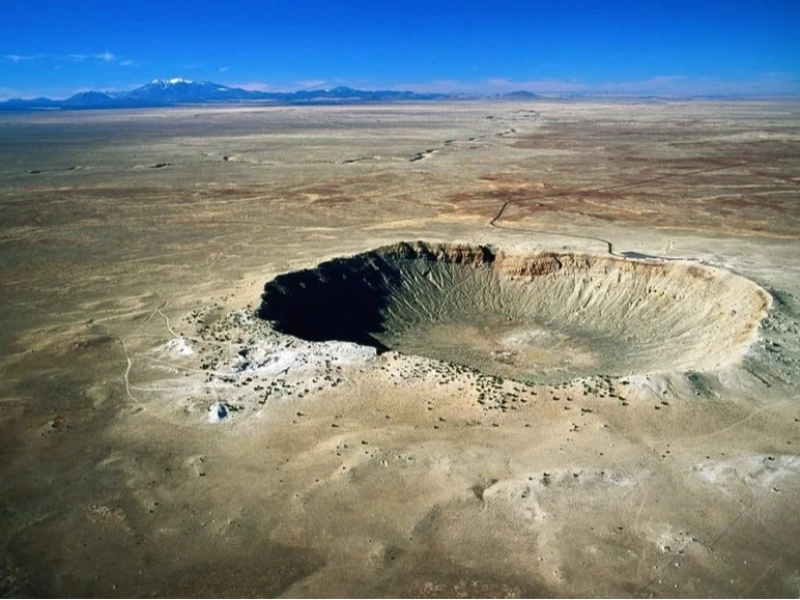These 10 Massive Craters Show How Close We've Come!
Advertisement
2. Barringer Crater (Arizona, USA)

Advertisement
Among the most accessible and well-preserved impact craters on Earth, the Barringer Crater—also known as Meteor Crater—is This remarkable geological formation, which lies close to Winslow, Arizona, United States, provides evidence of the great forces engaged in cosmic collisions. About 50,000 years ago, an iron-nickel meteorite—probably around 50 meters (160 feet)—hit the Earth's surface at a speed of roughly 12.8 kilometres per second (28,600 mph).
The effect produced a bowl-shaped depression 170 meters (560 feet) deep and roughly 1,200 meters (3,900 feet) in diameter. With such energy, the collision dug over 175 million metric tonnes of rock, producing a rim rising 45 meters (148 feet) above the surrounding plain. The region's arid climate has helped to remarkably preserve the crater by reducing erosion throughout the millennia.
Named for Daniel Barringer, a mining engineer first to propose its meteoritic source in 1903, the crater was crucial in the evolution of impact cratering research. At first, Barringer's suggestion was greeted with mistrust since the then-dominant notion explained such crater-like landforms as result of volcanic activity. Thanks in part for studies carried out at the crater by eminent planetary scientist Eugene Shoemaker, Barringer's impact idea was not generally embraced by the scientific community until the 1960s.
The Barringer Crater is today not just a major scientific site but also a well-liked tourism destination. The Barringer family owns the crater personally, and runs it as a tourist destination with a museum teaching about planetary science, impact cratering, and meteorites. NASA has also trained astronauts on the location since it resembles lunar craters.
Research of the Barringer Crater has shed important light on mechanisms of crater formation and impact mechanics. Its well-preserved characteristics—the flipped rock layers near the rim and the presence of shocked quartz and other impact-metamorphosed minerals—have enabled scientists to better grasp the harsh circumstances produced after hypervelocity impacts. Finding and researching other impact craters on Earth and other planetary bodies in our solar system has been much aided by this knowledge.
Advertisement
You May Like

